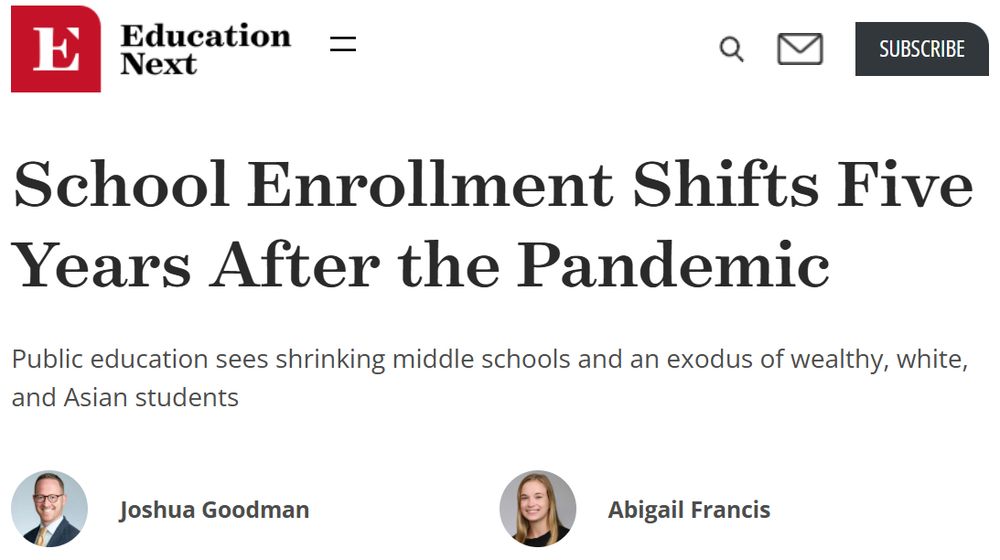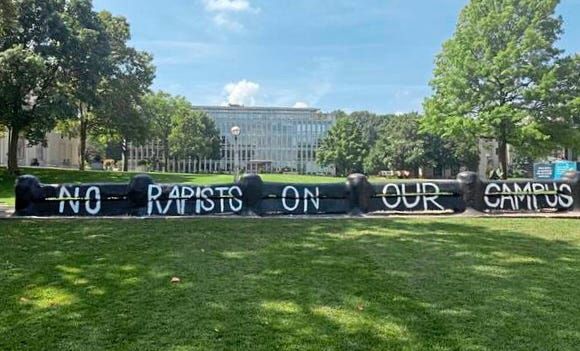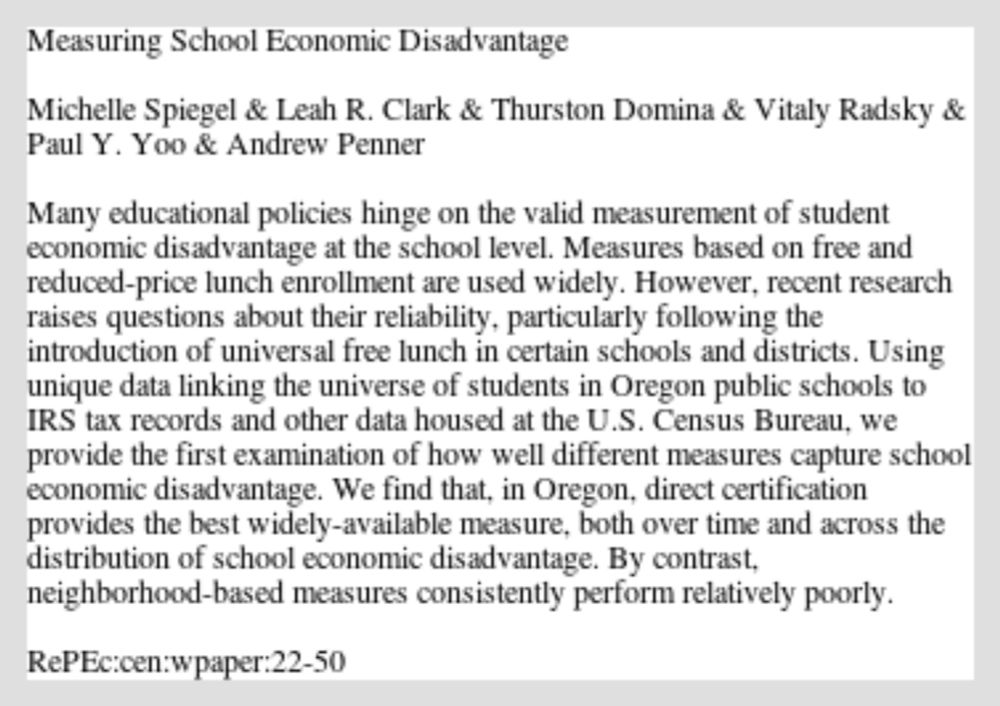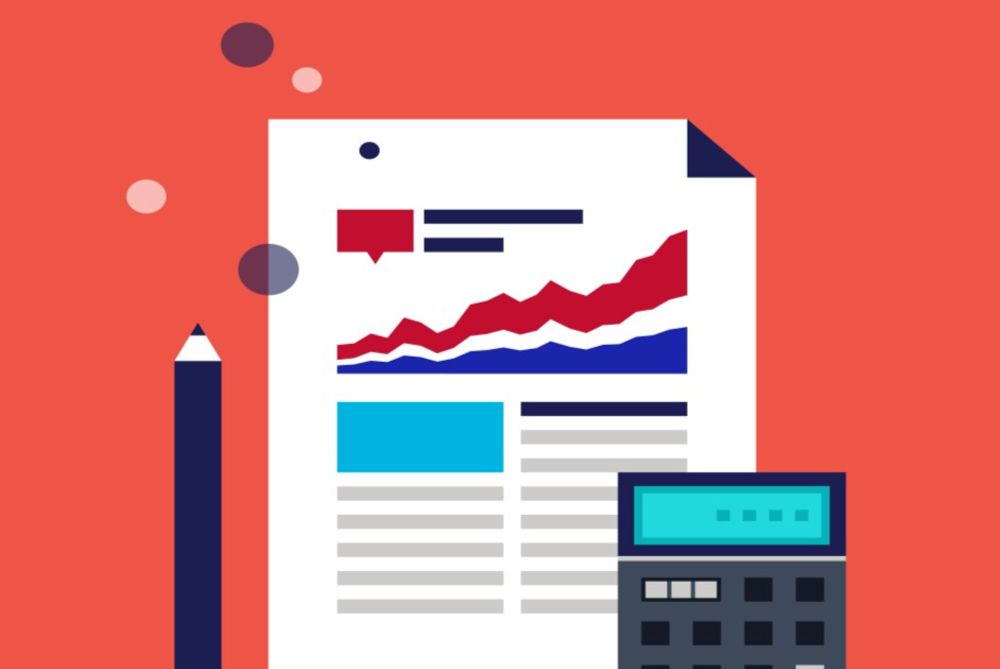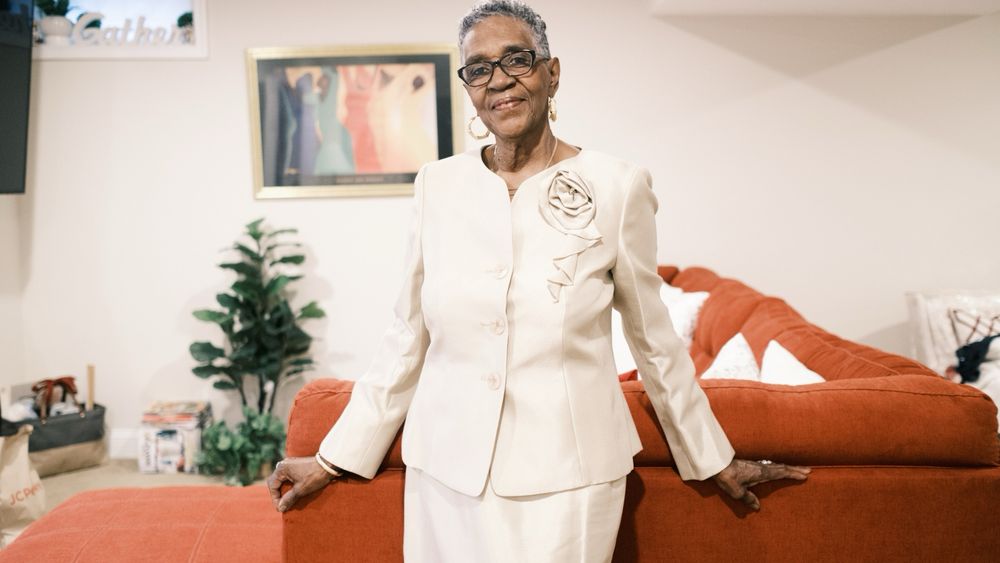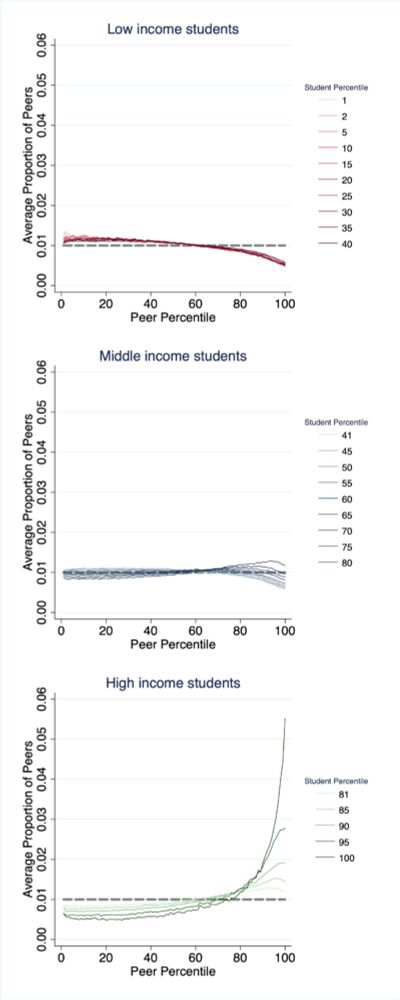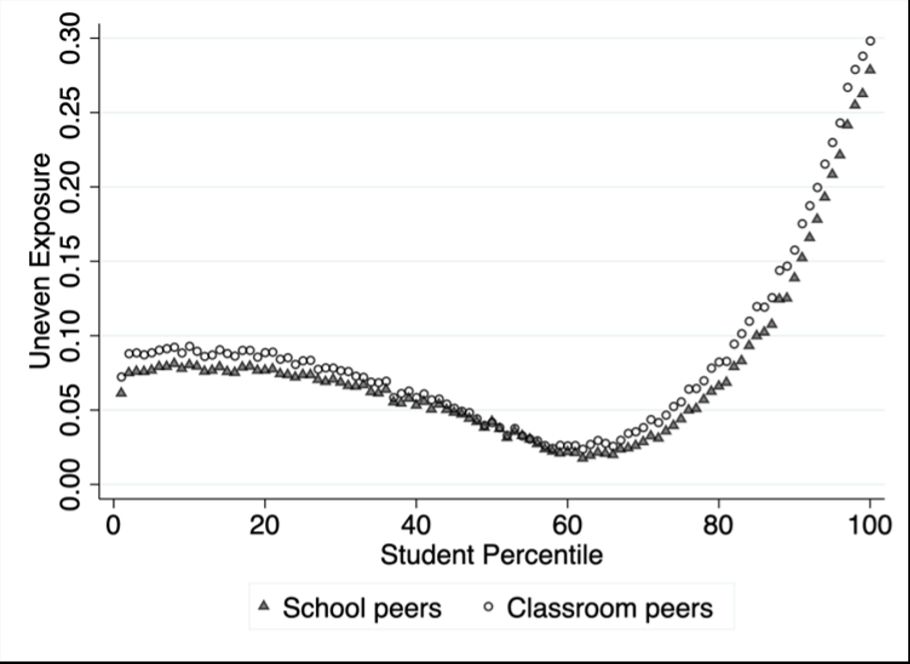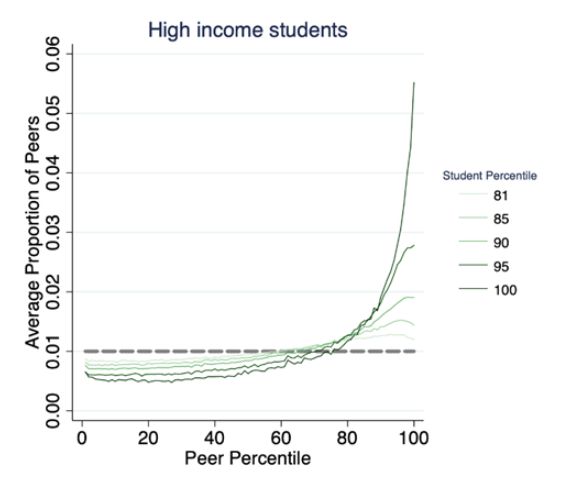Leah Clark
@leahclark.bsky.social
1K followers
510 following
39 posts
Economist @ U.S. Census Bureau. Views are my own.
Posts
Media
Videos
Starter Packs
Reposted by Leah Clark
Reposted by Leah Clark
Saeed Jones
@theferocity.bsky.social
· Sep 2
Reposted by Leah Clark
Leah Clark
@leahclark.bsky.social
· Jun 19
Leah Clark
@leahclark.bsky.social
· Jun 19
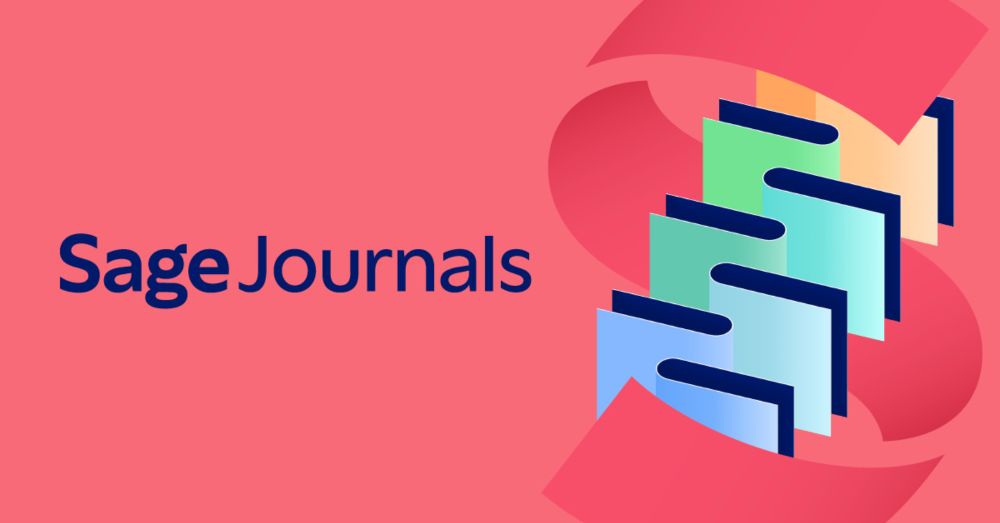
Measuring School Economic Disadvantage - Michelle Spiegel, Leah R. Clark, Thurston Domina, Vitaly Radsky, Paul Y. Yoo, Andrew Penner, 2025
Many educational policies hinge on the valid measurement of student economic disadvantage at the school level. Measures based on free and reduced-price lunch en...
journals.sagepub.com
Reposted by Leah Clark
Joshua Goodman
@joshua-goodman.com
· Apr 14
Reposted by Leah Clark
Reposted by Leah Clark
Bitsy Perlman
@bitsyperlman.bsky.social
· Mar 25
Leah Clark
@leahclark.bsky.social
· Mar 23
Leah Clark
@leahclark.bsky.social
· Mar 23
Leah Clark
@leahclark.bsky.social
· Mar 23
Leah Clark
@leahclark.bsky.social
· Mar 23
Leah Clark
@leahclark.bsky.social
· Mar 23
Reposted by Leah Clark
Emily Penner
@emilykpenner.bsky.social
· Feb 14
Michelle Spiegel
@michspieg.bsky.social
· Feb 14
Reposted by Leah Clark

